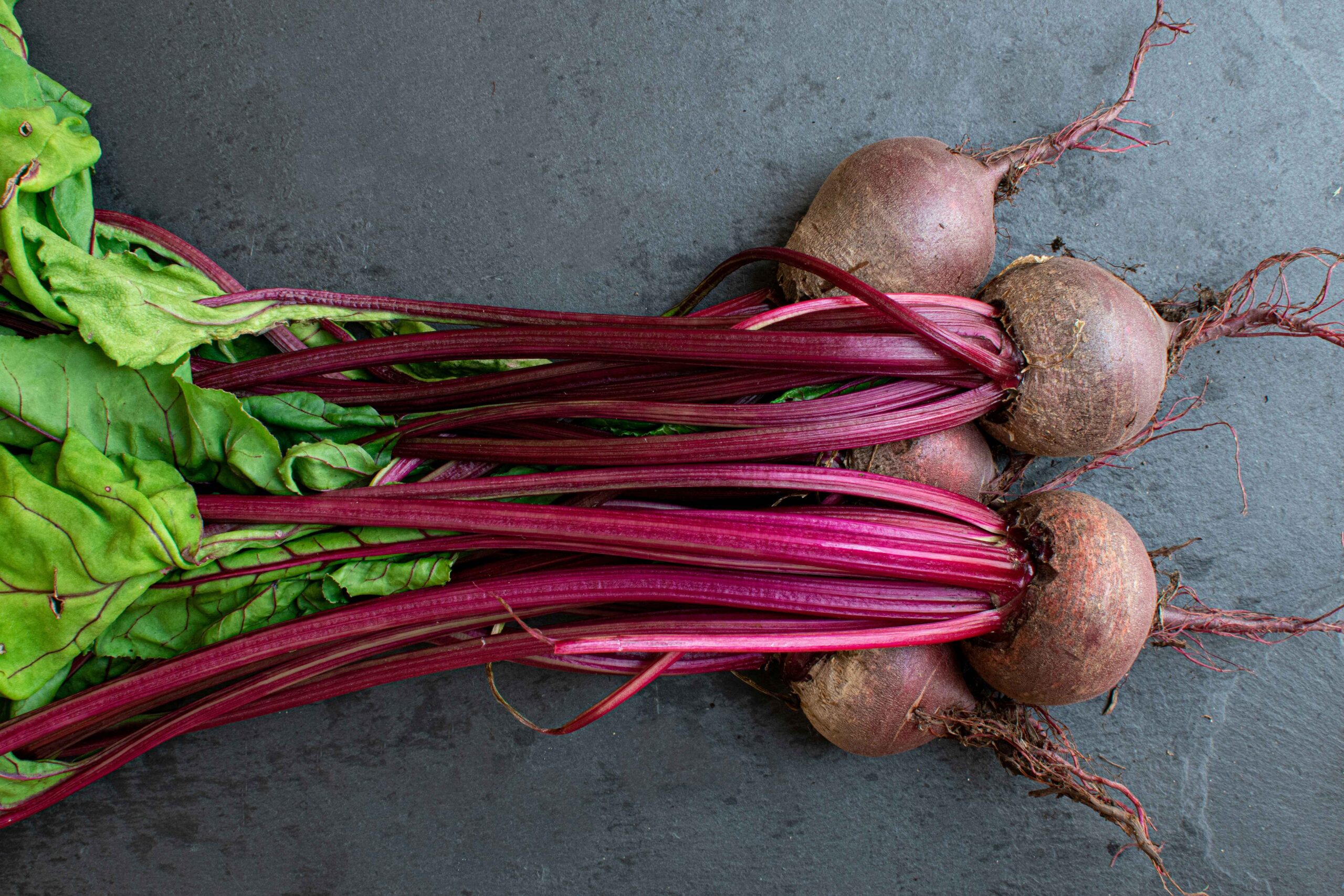When it comes to companion planting, beets are a great option for maximizing your garden space. As fast-growing, cool-season crops, they thrive in cool temperatures and can be planted in spring or fall. The variety of beet varieties available makes them versatile and suitable for different climates, and their beetroots and beet leaves are both edible. Planting companion plants alongside your beets can help improve the health of your garden, whether by keeping pests at bay or improving soil quality.
Also, read my guide on:
Companion Plants for Mint: Top Best & Worst Friesnds
By incorporating the right companion plants, gardeners can make the most out of every square inch of space. These plants can create a symbiotic relationship with your beets, helping them to thrive. For example, certain plants can deter pests, while others enrich the soil, making it more fertile for your beets. This win-win strategy not only boosts your crop yields but also helps you grow more in a smaller space, making it easier to manage your vegetable garden.
If you want to grow more while using fewer resources, choosing companion plants for beets is a must. You can maximize your garden’s potential and enjoy an abundant bounty on your table. With the right companions, your beets can flourish, making for a productive and thriving garden that keeps giving all season long.
Companion Planting and Benefits
Companion planting is an age-old gardening method that has been passed down through generations. It involves pairing plants together for the mutual benefit of each crop. For beets, this technique can greatly enhance growth, as the right companion plants help provide support, such as deter pests, offer shade for the roots, and create a more favourable growing environment. Unlike other plants, beets can benefit from their companion plants by improving soil quality and attracting beneficial insects.
Beets are cool-season crops that thrive in a moist environment. By selecting plants that help shade the roots or act as a shelter, you can maintain a more cool and moist environment, which is essential for beets to thrive. Many gardener strategies also highlight how this type of planting diversifies the garden, reducing the need for constant maintenance while promoting an organic gardening approach. It’s a win for both the plants and the garden, ensuring beets grow healthier and stronger without excessive inputs.
This method is an essential part of organic gardening, as it reduces the reliance on chemical fertilizers and pesticides. Instead of competing for nutrients, crops work together, creating a balanced ecosystem where both plants support each other. For example, plants that help deter pests or improve the soil make the entire garden more resilient to pests and diseases. As nature intended, companion planting keeps the garden thriving with minimal intervention from the gardener.
Beets as Companion Plants: Pros and Cones
Beets are not just a great crop to grow for their nutritious roots but also have their benefits as companion plants. Their thick, rounded roots are excellent for breaking up compact soil, which allows tender roots from nearby plants to grow more easily. When planted early, beets can help prepare the ground for future crops by loosening the soil. Their big leafy greens provide a shade that can help protect other plants from the harsh sun. Also, beets are a great addition to your garden as they enrich the soil when their old greens are chopped and added to the compost bin, providing extra magnesium and nutrients to the soil.
However, there are some downsides to planting beets alongside certain crops. While beets can tolerate drought-tolerant plants, they do need consistent moisture—about 1 inch of water weekly—to thrive. If planted with drought-tolerant plants, such as those that don’t need much water, beets may struggle. Additionally, beets can attract pests like aphids, beetles, snails, leafminers, and thrips, which can harm nearby crops. These pests can be a major problem if you’re not careful with your planting strategy, and they may spread quickly through your garden.
On the positive side, beets help create a healthier garden ecosystem by improving the soil and attracting beneficial insects. Pairing beets with other plants that help deter pests can lead to a symbiotic relationship, where both the beets and their neighbours grow strong and healthy.
Companion Plants for Beets
Lettuce
When planting beets, it’s important to consider the types of plants that grow well alongside them. Lettuce is an excellent companion for beets as it has shallow roots, unlike beets, which grow deeper into the soil. This means they won’t compete for space or nutrients. Planting lettuce with beets in early spring or early fall allows both crops to thrive without overcrowding, giving you a healthy harvest.
Kohlrabi
Kohlrabi is also a great companion for beets. Both plants require similar growing conditions, but kohlrabi doesn’t compete with beets for nutrients. While beets don’t need much calcium, kohlrabi can take it from the soil, making them good neighbours. However, they share some common pests, such as aphids and beetles, so you may need another plant to help control these issues.
Sage
If you have rabbits in your garden, sage is an excellent plant to grow alongside beets. Sage is pest-resistant and drought-tolerant, which makes it a great choice for beets, especially in dry or raised beds. Sage can help protect your beets from rabbits, who often nibble on them. Planting sage in a container keeps it from competing for space with your beets, allowing both plants to thrive.
Spinach
Another great companion for beets is spinach. Both plants have shallow roots, with spinach acting as a living mulch to suppress weeds and help retain soil moisture. Since spinach is a water-loving plant, it benefits from the extra moisture that beets provide. Planting spinach with beets in cool weather, such as early summer or late fall, ensures they both have the right conditions to grow and flourish.
Tomatoes
Growing tomatoes alongside beets can be a great gardening strategy. During summer, when the heat is intense, tomatoes provide shade to your beets, giving them a respite from the harsh sunlight. This helps keep the beets from getting too stressed. If you prune the lower branches of the tomatoes, the beet greens will have more room to grow. Beets and tomatoes are both thirsty plants, especially during peak summer, so they benefit from deep watering. It’s best to water them in the evening so the soil can absorb moisture before the sun starts evaporating it.
Radishes
Radishes are another good companion for beets. As root vegetables, they are closely related to beets and thrive in similar growing conditions. Radishes grow quickly and have smaller roots, making them a perfect fit in the same plot as beets. Their roots help break up the soil, which can improve the growing environment for beets. Since both beets and radishes have similar soil needs, they won’t compete much for space or nutrients, making them ideal neighbours.
Alliums
Alliums like garlic and onions are excellent companions for beets. These plants are known to repel pests such as cutworms, borers, aphids, and flea beetles that commonly affect beets. Planting garlic or onions in rows near your beets will not only protect them from pests but also help by ensuring that the roots of these plants aren’t sharing space with beetroots. Alliums are effective in creating a pest-free environment, allowing beets to grow without disturbance.
Brassicas
Brassicas like broccoli, cabbage, kale, Brussels sprouts, and cauliflower make great companions for beets. These plants have similar growing conditions and are best planted together in the same seasons. Brassicas do not compete with beets for resources, and they help by loosening the soil around the beetroots, which allows for better root development. Planting beets alongside brassicas maximize your garden’s productivity by using space efficiently.
Bush Beans
Bush beans are a great companion for beets because they help improve the soil by adding nitrogen, an important nutrient for plant growth. As beans grow, their roots fix nitrogen in the soil. Once the beans decay, they release this nitrogen, making the soil even more fertile for beets to thrive. By planting beets and bush beans together, you can reduce the need for extra fertilizer and prepare the bed for the next season. If your soil is depleted, the beans will naturally enrich it, supporting better growth for the beets.
Catnip
Catnip is another interesting companion for beets. While it may attract cats, its main role in the garden is to help deter mice that may be tempted to nibble on your beetroots. These pesky rodents often love to feast on fresh beets, but catnip’s strong scent keeps them at a safe distance. For a more controlled environment, you can grow catnip in a container near your beets and adjust its water schedule accordingly. The appeal of catnip adds a unique twist to your garden while protecting your crop.
Marigold
Marigolds are a classic companion plant for beets. These cheerful flowers not only attract pollinators but they also help repel harmful pests. Their strong scent drives away aphids, which are known to damage the leaves of beets, and also attract lacewings, which feed on pests that could harm your crops. The flowers of marigolds create a vibrant border around your vegetable beds and enhance the garden’s diversity by controlling pests naturally.
Corn
Corn is another excellent choice to plant with beets. Although beets and corn are grown in different seasons, they make a great team. When you plant beets first in early spring, they can be harvested by the time you plant corn. As the corn grows taller, it provides much-needed shade for the beets, especially during hot summers. The shade helps beets stay cool and prolongs their growing season, making it easier to grow a second batch of beets while benefiting from corn’s tall growth.
Mint
Mint is a fast-growing herb that works well as a companion plant for beets. It’s best to grow mint in containers to prevent it from taking over your garden. The flowers of mint help distract pests like aphids, keeping them from infesting your root vegetables such as beets. By planting mint near your beets, you can naturally prevent pest problems and enhance the health of your crops.
Plant to Avoid Near Beets
Pole beans
Field mustard
Charlock (wild mustard)
Final Observations
Companion planting with beets is a fantastic way to boost your garden’s productivity and health. By pairing beets with the right companion plants, you can maximize space, improve soil quality, and naturally deter pests. From nitrogen-fixing bush beans to mint that repels aphids, these companions support beets in various ways, making them thrive throughout the growing season. Whether you’re enhancing growth or providing shade, companion planting offers mutual benefits that make your garden more sustainable and efficient.
FAQs
Q- What is the best companion for beets?
Lettuce and radishes are great companions for beets, as they have shallow roots and thrive in similar conditions without competing for space or nutrients.
Q- What plants like beetroot?
Plants such as kohlrabi, spinach, and brassicas like cabbage or broccoli are good companions for beetroots as they have similar growing conditions and can enhance each other’s growth.
Q- Can you plant beets next to peppers?
It’s not ideal to plant beets next to peppers. Peppers need warmer soil, and beets may not thrive in such conditions, which could limit both plants’ growth.
Q- Can I plant beets with zucchini?
Yes, you can plant beets with zucchini. Zucchini provides shade for beets, which helps prevent beets from overheating, and both plants benefit from the same soil conditions.










